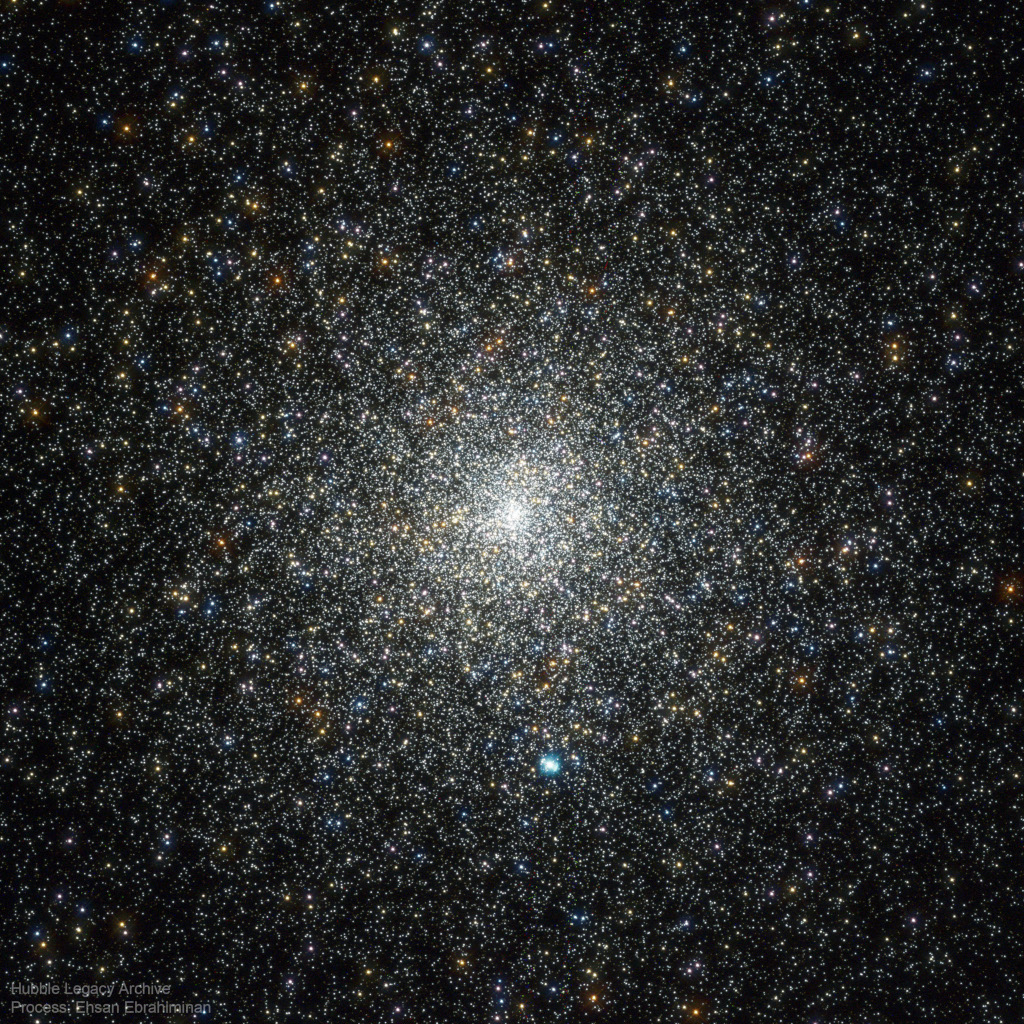2023年6月15日
M15: Dense Globular Star Cluster
Image Credit: NASA, ESA, Hubble Legacy Archive; Processing: Ehsan Ebrahimian
Explanation: Messier 15 is an immense swarm of over 100,000 stars. A 13 billion year old relic of the early formative years of our galaxy it’s one of about 170 globular star clusters that still roam the halo of the Milky Way. Centered in this sharp reprocessed Hubble image, M15 lies some 35,000 light-years away toward the constellation Pegasus. Its diameter is about 200 light-years, but more than half its stars are packed into the central 10 light-years or so, making one of the densest concentrations of stars known. Hubble-based measurements of the increasing velocities of M15’s central stars are evidence that a massive black hole resides at the center of the dense cluster. M15 is also known to harbour a planetary nebula. Called Pease 1 (aka PN Ps 1), it can be seen in this image as a small blue blob below and just right of center.
Tomorrow’s picture: when time lapses
M15: 紧实的球状星团
影像提供: NASA, ESA, Hubble Legacy Archive; 影像处理: Ehsan Ebrahimian
说明: 梅西耶15(M15)是一个由超过100,000颗恒星聚成的庞大天体。年龄高达130亿年的M15,是我们银河系形成早期孑遗的天体,也是目前仍在银晕里漫游的170多个球状星团之1。在这幅重处理过的清晰哈勃望远镜影像中心的M15,位于北天的飞马座方向大约35,000光年远之处。这个星团的直径大约为200光年,不过,超过一半的成员星聚集在中心大约10光年的区域里,让它成为现知恒星分布最紧实的天体之一。用哈勃望远镜所进行的量测发现,越近中心的恒星移动速度越高,显示这个紧实球状星团的核心藏着超大质量黑洞。除此之外,M15还拥有一个行星状星云,这个名为Pease 1(PN Ps 1)的星云,以泛蓝小光斑之姿出现在这幅影像的中下方。
明日的图片: when time lapses



